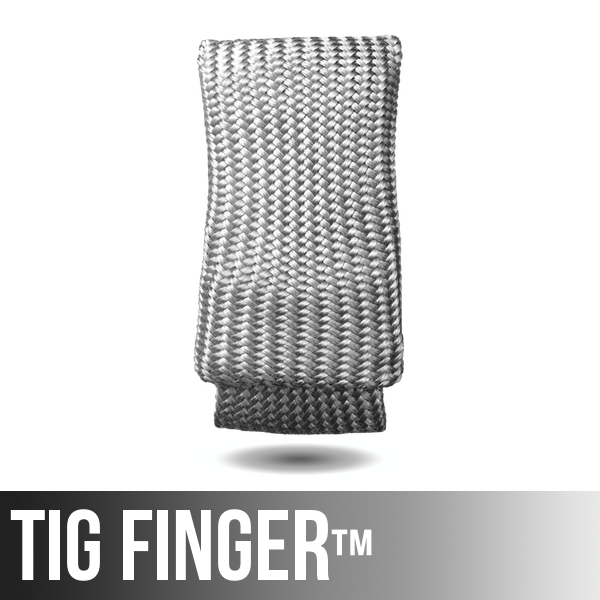Video Transcript
7018 Vertical Uphill Lincoln vs Hobart
All right, you know, sometimes when I set out to film a video, I imagine this happens to everybody. You start off with an idea and then it kind of takes its own form and turns into something a little different. Today I started off wanting to compare Lincoln Excalibur 7018 to some Hobart 7018 I got from Tractor Supply. I wanted to do the comparison on vertical uphill lap joints, 1/4 inch thick metal. That’s roughly six millimeter thick metal. I’m using 332, that’s 2.4 millimeter 7018, and just stuff happened and it just turned into something a little different, but I think we can all learn something from it anyway. This is not a sponsored video. You’ll see that as I go along. All right? Let’s do it.
All right, what I started out to do was compare these two electrodes, some Hobart 332 7018 with some Lincoln Excalibur 7018, and the Lincoln had been left outside. You can see there’s a little rust on them. I’ve only got a few of them. The Hobart had been kind of kept in this little plastic case, but neither one of them has been kept in an oven. But these are in better shape. They’ve been indoors. These have been outdoors. We’ll see what happens. I’m using this little old school Miller Thunderbolt AC/DC machine I got of Craig’s list for somewhere around $200.00 – $300.00, I don’t remember exactly.
And just as a quick reminder, I did a video not too long ago setting this thing up using a scratch-start tig. That’s the benefit of having an AC/DC stick welder is that you can also do scratch-start tig with it. All you need is an argon bottle, a flow meter regulator, and this little adapter right here to hook up a tig torch. Your tig torch needs to have a valve, and you need this adapter. It’s a power cable adapter, it’s the part number 105Z57. Look it up on Google, on Amazon or somewhere. You’ll find it pretty easily. That’s really the main thing that you need to adapt this thing, and you just hook your stinger on just like that, and they you’re ready to do scratch-start tig. You need to be on DC negative, DC electrode negative.
Now, with this machine, setting the amperage is a little bit of a chore. You can see it says Accu-Set amperage control, as if it’s accurate. It’s not that accurate. There’s a lot of slop in that handle, so I had to put a meter on there to really kind of dial in my amperage setting. But you know, it’s close enough. You can kind of gauge just by sight. But I’m going to do a little quick shot here of sort of a hand-rail type joint with scratch-start tig using this little unit before we get into the stick welding. You can see the arch is plenty good enough, plenty smooth enough to do tig welding. Problem is really snapping out of the puddle. That’s really the biggest problem with scratch … It’s not a big deal. Starting the puddle, the biggest problem is snapping out of it and then leaving a crater or a gray area that’s oxidized. But you can do some pretty decent work with a scratch-start tig unit. I’ll show you one more little run here before we get into the stick welding. You see I’m just scratching the electrode. You can also flick the wire on the electrode to get it started. But you know, it’s like once you get it started, it’s not much different than any other tig welder.
Okay, let’s get into the stick welding now. We’re on DC positive, DC electrode positive for 7018s. Usually with a 332 7018 rod, I wind up being around 90 amps. You see, it’s set on right at 90 amps there, as accurately as I can set it, but again, this thing’s got as much slop in it as the old 1970 Chevy work truck I that I had, on the steering wheel. It’s just not so precision. But you can make it work. That’s why they call them buzz boxes. The thing has really kind of got a loud hum to it, but it runs pretty good. So first off, I’m going to use the 332 Hobart, and I’m just going to run some beads with it. I’m going to kind of shake the rust off. I don’t run stick that often, so I need to kind of … I need to practice.
As you’ll see as this video goes on, I need a lot of practice, but I’m just running a bead down the edge of this 1/4 inch thick steel just to kind of get my hand in it, and also I’m going to run the whole rod out, because I want to show you something here at the end as I burn the whole rod off, and that is basically when you burn a whole rod, a whole 332 rod and you see it starting to be glowing red, you know you’re kind of at the high end of what you should run. You shouldn’t run a whole lot hotter than that. It starts melting off differently when it’s red hot like that, at the end. But you know you’re at close to 90 to 100 amps when it’s glowing red like that.
This is the Lincoln 7018 Excalibur rod, and it wasn’t quite glowing at the end, but you notice the slag is coming off a whole lot better on the Lincoln than it is on the Hobart. All right? So, I’m going to drop it down to about 80, ’cause we’re going vertical uphill now on this 1/4 inch thick lap joints here. These are some little pieces that I ordered from the James F. Lincoln Foundation. They actually have a little Boy Scout merit badge medal kit, and they have these little pieces of 1/4 inch thick metal, and that’s where I got it from. You can see the puddle is kind of following the arch here. It’s a little colder than I would like it. It’s okay, it’s easily controllable, but I would like it a little bit hotter. But that was my starting bead, and I’m going to turn it up. I’m going to go ahead and run the vertical uphill at 90 as well from here on out. After I ran a couple more, here’s the third or the fourth one. You can see that as I move the electrode around a little bit that the puddle is not quite chilling behind the arch as much as it was on the first on, and that’s kind of what I wanted.
All right, let’s chip the slag off all those. You can see the very first one all the way to the far right, I’m a little bit rusty, and then as I go along it gets a little bit better. All right, we’re going to use the Lincoln Excalibur here, and you can see they’re kind of rusty and I only have a few of them left, but they’ve been outside. They haven’t been in the oven or anything like that. I’ll write an article about that on my webpage. You can click to that webpage in the description box of this YouTube video.
But this is what that arch looks like at 90 amps. You see the puddle is not cooling behind me a whole lot, and I think it’s running pretty good. When I chip off the slag, that’s really kind of what tells the story. It’s just a better looking bead, really, and the slag comes off a lot better. Now, does that make it a better bead? Probably not. This is the very last of the Lincoln Excalibur that I had. You can see I’m kind shooting at a really pretty true 90 degree angle which is a good idea to shoot for on vertical welding like this. I’m kind of cue sticking with my other hand, there, so I don’t leave any arch strikes on this bead. I didn’t get an arch shot of that, but you can see it came out a little bit better than the previous ones.
Next up, because I’m out of the Lincoln rods, I’m going to go ahead and try a two pass weld on this with the Hobart rods. The first pass, kind of a root pass. I’m just concerned with penetrating into the root, and not worried about taking it all the way out to the edge here. Couldn’t make it all the way up with one rod. Again, I’m going to kind of cue stick with the other hand to prevent leaving arch strikes all around. I’ve only got a little ways to go. The rod can kind of heat up and make your fingers kind of hot, if you’re not careful, so I just hold it very gingerly when I’m doing that.
All right, the first pass, yeah, it looks okay. The slag comes off pretty easy, but then we’ll do a second pass here with the Hobart 7018s, with just a little bit of weave, just a little bit of oscillation, trying to pause on the left side there so that I don’t leave any low placed or undercut. Pause just for a little bit, holding kind of a tight arch on both edges. And for a restart here, I’ll try doing this without the cue stick method and just kind of light up just ahead of the arch, pull it down into the crater, and then keep going. Same technique, though, pausing momentarily on the toes of the weld to not leave any undercut. We’ll see how that does at the end here.
We’re going to cut and etch all these things, and we’ll really see some things as we do that. First up is the Hobart 7018 that I got from Tractor Supply. Single pass welds, 332, nothing glaringly wrong there, even the one that looked kind of cold to start with turned out just fine. Let’s take a look, now, at the Lincoln Excalibur 7018. Looks a little different as far as the structure of the weld, like the weld nugget is not as discernible. Maybe the grain is a little bit more refined, maybe not, I don’t know, but it looks fine.
Now let’s look at the two pass weld with the Hobart rod here. Now, pay attention to this here, because this is the money shot. See the big difference in the way the first pass and the second pass looks? You’re always going to see a difference. You’re always going to be able to distinguish a first pass from a second pass like this when you cut and etch, but it just looks like a much finer grain structure, and a courser grain structure on the second pass, and that’s because the weaving is a slow travel speed, a lot of heat input. The cooling rate is very slow. The grains are allowed to grow. It does affect fatigue properties. Now, whether it’s acceptable or not, it just depends on the application, but this is a good demonstration on the difference and why that weaving is frowned upon in certain welding codes. There is a difference.
Before I wrap this video up, I’m going to stir the pot just a little bit here with a true or false question. True or false, 7018 rods are low hydrogen rods and need to be kept in an oven. All right, in the description box below this YouTube video, there’s a link to my website. It says “For a more detailed article on this subject, click here.” That will take you to a webpage where I talk about low hydrogen rods, when they need to be kept in an oven, and when they don’t, et cetera. Also, feel free to leave your comments below on what your take is on that. All right? See you next time.
Oh, and just a quick reminder, I support these videos with the sales from my online store, at weldmonger.com. Thank you.







Leave a Reply